Photos: iStock
Education, gender and the blue bioeconomy
Secondary and vocational education
Part of the Salmon and Gender Equality project involves gathering statistical data on men and women in vocational training and university education in the blue economy. For vocational training, most of the statistical institutions in the Nordic Region publish the number of students by gender in maritime training and related fields. Such courses are male-dominated in all the Nordic countries. That confirms the conclusion reached by NIKK in a report on vocational training in the Nordic countries that the labour market is highly gender-segregated and has remained so for a long time, as also reflected in gendered choices of vocational training (Simonson, 2022). A gender perspective was applied in the report, questioning perceptions of “male” and masculinity as well as “female” and femininity. It also discussed the power aspects connected to those perceptions.
In most of the Nordic countries, there is a long tradition of maritime educational tracks at the secondary level of education, e.g. the steersperson course.
A newer addition to education relates to functions in aquaculture. Norway has a good structure that has already been implemented in the secondary school system, while Iceland has some separate educational institutions that cater to various segments of industrial or tradesperson training. Greenland offers fishery training.
Figure 34. Gender and vocational education and training in Greenland, 2006-2022. Source: Greenland statistics
Not surprisingly the gender ratio in such courses varies depending on the given track and discipline. In Greenland four women completed the basic fishery course and five the basic maritime course, while only one completed the 1st. class skipper course for fishing vessels in 2021. The highest number of women completed the vessel fitter course in secondary maritime education in Greenland, numbering 14 in total in the period 2013-2022.
In the Faroe Islands, the ratio of female students in maritime education from 2009-2021 was highest in 2014/2015 at almost 20%, but in most cohorts it was under 10%, with men outnumbering women in secondary maritime education in the islands each year according to the available statistics. The red bars indicate women and the blue bars indicate men in the graph below.
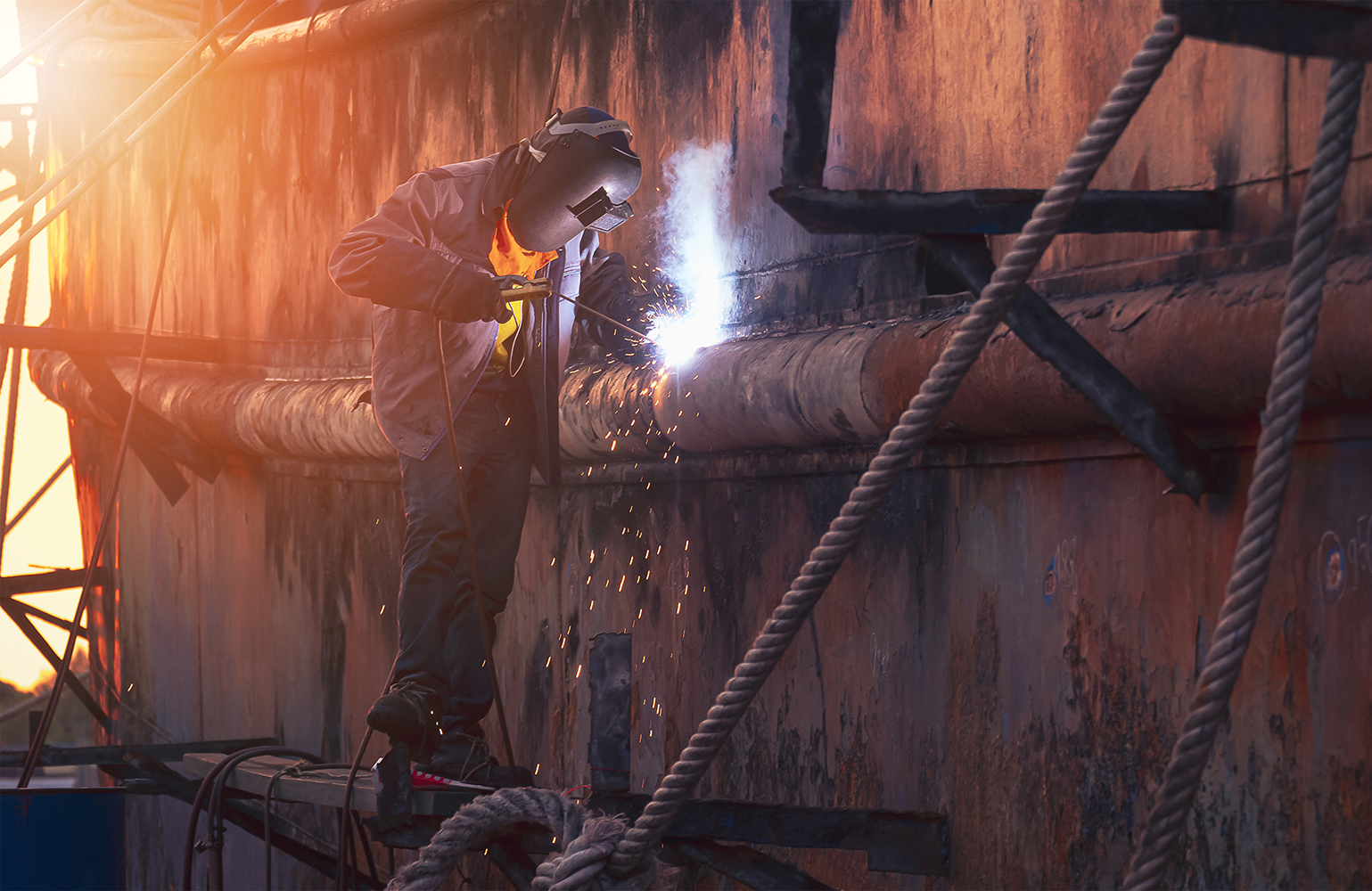
Vessel fitter at work
Photo: iStock
Photo: iStock
Figure 35. Maritime education by gender (number of students), Faroe Islands, 2009-2021.
Source: Faroe Islands statistics
Source: Faroe Islands statistics
There are numerous Danish statistics on vocational education and training, covering the period from 2005 to 2022. They include vocational institutions, with data broken down by age, ancestry, institution, education, completion, entrance and gender.
For marine engineering and ship assembly, the number of women is small, with only six women completing that course in Denmark in the period 2005-2022.
Figure 36. Marine engineering and ship assembly course by gender in Denmark, 2005-2022.
More women participated in the commercial fisheries course, but not proportionally. In the period 2005-2022, 91 women in Denmark completed the course.
Figure 37. Commercial fisheries course by gender in Denmark, 2005-2022.
The Danish Education and Research Ministry provides a complete overview of the various maritime courses provided (Uddannelses og Forskningsministeriet, 2023). Denmark has a long tradition of navigation training onboard school schooners and has also established educational programmes in various disciplines related to the maritime field. The courses are offered in nine educational institutions across the country, ranging from mechanical schools (maskinmesterskole) in Copenhagen, Frederica, Aarhus, and Odense to maritime and navigational schools in Marstal, Svendborg (SIMAC), Kogtved and Maritime Centre West (Denmark Statistics, 2023).
In Denmark, multiple educational tracks have been identified within the scope of maritime education. Compared to male student recruitment, women are in the minority. When compared to cohorts ranging from roughly 500 to 800 on such courses, females are few and far in between. However, some of these courses are more popular among females, e.g. vocational bachelor education, maritime VBE and ship’s officer training. The number of women attaining master’s degrees in SCE and engineering related to the maritime field is also on the rise. Qualitative sources suggest that there may be a rise in women choosing such courses (September newsletter, 2023).
Figure 38. Women’s attainment in maritime education in Denmark, 2005-2022.
In Finland, vocational fisheries training has a high dropout rate as there is a marked difference between the number of total students and those completing the course. A small minority of the students were women over the period 2004-2021. The statistical source is Statistics Finland, data on students and qualifications attained at educational institutions.
Figure 39. Fishery-related vocational training by gender in Finland, 2004-2021.
Fish processing is a further qualification in Finland within the vocational training system. Here women are more visible in the graph but still form only a minority of students and again there is big gap between student enrolment and the number of qualifications gained.
Figure 40. Fish processing training and completion by gender in Finland, 2004-2021.
Vocational training in fish farming shows another trend over a 17-year period, from 2004-2021; there are no number of students from 2005-2009 and none after 2018, but there is more balance between student enrolment and qualifications. Still women are in the minority (on average accounting for less than five percentage of the students).
Figure 41. Fish farming training and completion by gender in Finland, 2004-2021.
Fishing guide vocational training has risen in popularity, dominated by the enrolment of male students. Since 2016 there has been a rising proportion of women compared to men, even if at marginal rates.
Figure 42. Fishing guide training by gender in Finland, 2004-2021.
Norway has statistics available covering over a decade from 2012-2022 on educational attainment by gender in maritime education and training. Not surprisingly there is a slight increase in women choosing maritime-related education and training, though the number of female students is still far from that of their male counterparts. Even if not yet observable in statistics, there was a news report on the increased popularity of such courses among women in Norway. ”A few years ago, Nord-Trom's high school on Skjervøy struggled to get students to the blue line. Now the situation has turned on its head, and girls are helping to fill up the classes“ (NRK, 2023).Oral sources also report that the majority of women are enrolled in the fisheries college, which forms part of the University of Arctic Norway, Tromsø.
Figure 43. Maritime educational attainment by gender in Norway, 2012-2022.
Table 5. Proportion of girls (%) in secondary maritime-related education in Norway, 2013-2023
2ndary education lines | 2013 | 2014 | 2015 | 2016 | 2017 | 2018 | 2019 | 2020 | 2021 | 2022 | 2023 |
Vg1 Nature use | 50.6 | 52.8 | 49.9 | 50.2 | 52.6 | 50.7 | 47.5 | 49.7 | 49.7 | 50.7 | 50.8 |
NAFFA2 – Fishery and harvest | 4.1 | 5.0 | 7.6 | 0.8 | 9.4 | 10.2 | 9.1 | 11.3 | 11.3 | 13.5 | 10 |
NAAKV2 - Aquaculture | 28.4 | 18.8 | 20.6 | 23.4 | 24.1 | 29.2 | 23.2 | 25.1 | 32.3 | 29 | 36 |
Source: Fiskeridirektoratet (from Henriksen & Nyrud 2021)
The proportion of girls enrolled in the fishery and harvest programme has doubled since the school year 2012-2013. Over time they can become steerswomen and skippers. However, the proportion of women remains the lowest in the fishery and harvest programme, within the nature use educational track. Almost one-third of the student cohort are women in the aquaculture educational track. That reflects well the gender-segregated labour market in Norway.
Some interesting developments are taking place in Iceland. Women’s educational attainment in fishery-related education at secondary level fluctuates substantially in some years vs. males over 50% and even over 60% (2015 & 2020). However, the statistics should be treated with caution since there are very few students in each cohort in total, making any changes between years seem like major changes.
Figure 44. Proportion of women completing fishery-related vocational training in Iceland, 2004-2020.
The participation of women in the VET programmes at technical schools and mechanics education (vélstjórn) is minimal – very few (2-4) of the student cohorts of roughly 50 students were female students except for in the last few years (2019-2021), when they increased to more than 20% of the total number of students acquiring a licence to become machinery experts.
Tertiary level education
A few academic courses available in the Nordic Region are clearly related to the fishing industry, such as the MSc in Coastal and Marine Management in Iceland. Other educational tracks at university level may be highly relevant to tasks in the maritime sector, but are not exclusively focused on the sector (such as business and management programmes). Thus selecting which university programmes should be included in our search for gender-disaggregated statistics proved difficult. We have therefore chosen to highlight a few examples from around the Nordic Region.
The graph below shows the number of students by gender since the MSc course in Coastal and Marine Management started in 2009 (source: Statistics Iceland statistical database). The graph demonstrates how female students have outnumbered male students in recent years.
At university level, female students outnumber male students in most university educational programmes with one exception. As this example shows, the only educational programmes where women have not outnumbered men both as students or faculty is within a few specific disciplines in the natural science programmes. However, women are increasing in number compared to their male peers on STEM courses (Jansson & Sand, 2021; Klang et al, 2019). In the Nordic countries, there has been an ongoing effort to decrease gender segregation on the labour market by profiling educational programmes and orienting them away from a male-dominated educational setting and to try to improve women’s study environment on courses for male-dominated professions – by making them feel less like outsiders or deviant from the norm. Various measures have been taken in different countries (Jansson & Sand, 2020).

Figure 45. Educational attainment by gender for the MSc in Coastal and Marine Management, 2009-2021.
Further, we have looked at the example of Iceland and Finland with respect to tertiary courses (at university level encompassing bachelor’s, master’s and doctoral programmes) clearly related to the marine field, with specialisation in coastal areas or inland lakes.
Figure 46. University educational attainment focusing on the marine field by gender, Iceland, 1996-2021.
University educational programmes with a clear focus on the marine field, coastal or inland resources and utilisation or technology are provided at four different universities or university colleges in Iceland, namely the University of Iceland, University of Holar College, University of Akureyri and the Westfjords University Centre. While student attainment has been growing in the field of coastal management, with an increased female ratio, the statistics do not show the same trend for aquaculture and marine studies, where male students have always been a majority. Also, there is a long tradition of female marine biologists.
Figure 47. Graduation by gender from fisheries and marine-related courses at university level, Finland 2002-2022.
In Finland, we have also examined the gender ratio across graduate levels (bachelor’s, master’s and doctoral programmes) within two educational programmes, one on natural resources and another in the field of marine technology. The statistics reveal that while the number of graduates of both genders has been on the decrease in the field of natural resources, males by far outnumber females in terms of the number of graduates of various courses in the field of marine technology.
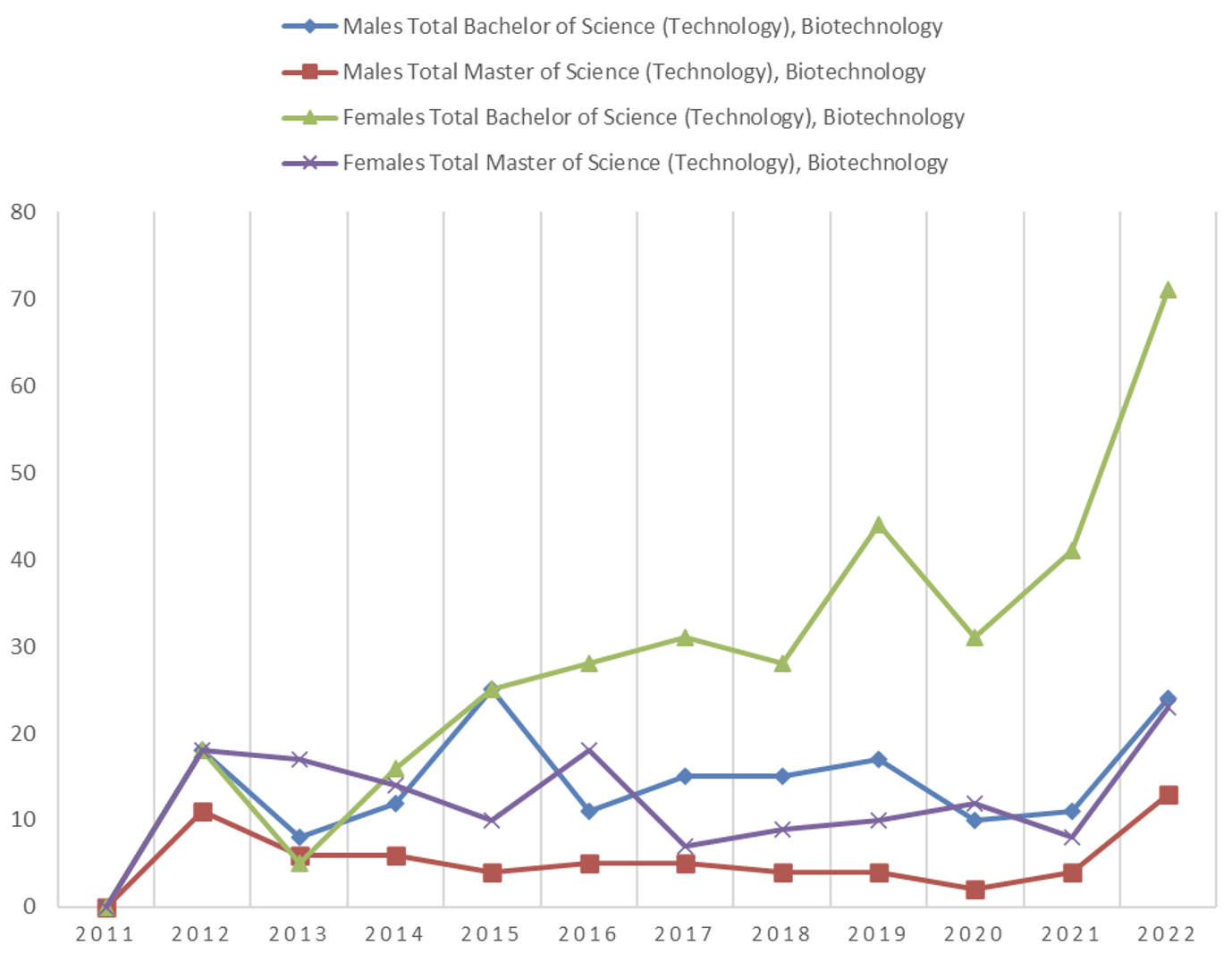
Figure 48. Number of new students in biotech programmes, Finland, 2011-2022.
The situation is different for biotech programmes in Finland. The graph above shows the number of new students in biotechnology at undergraduate and master’s level according to data from Statistics Finland. Similar to the gender division in Coastal and Marine Management, there are more female students than male students studying biotechnology in Finland (source: statistical database of Statistics Finland).
In general, we had difficulties obtaining gender-disaggregated data on educational attainment and graduation at university level (tertiary level) from all the Nordic countries. In figures 50, 51 and 52 educational attainment by women across educational levels in maritime related education is shown for 2012, 2021 and changes from 2012-2021. It reveals that in 2012 the highest share of women in fisheries and maritime education on secondary and tertiary level were in Faroe Islands and Sweden. In 2021 the highest share was in Iceland, Greenland and Sweden. Over almost a decade the most significant increase of women in these types of education was in Iceland, Denmark and Sweden.
In Swedish occupational statistics (2012-2018), the gender ratio of marine biologists is high, with women accounting for 51% (SCB, 2012-2018). We also know that while the gender representation among staff on some of the natural science programmes at the University of Iceland that will recruit graduates to the marine sector (i.e. machine engineering) and the number of female students are rising compared to their male peers, while the vast majority of faculty members are male (University of Iceland, SENS, 2023). However, at the Arctic University Norway, in the College of Fisheries Science, where female students have outnumbered male students for many years (oral information), there is almost even gender representation among the administrative staff and faculty. (https://en.uit.no/enhet/nfh)
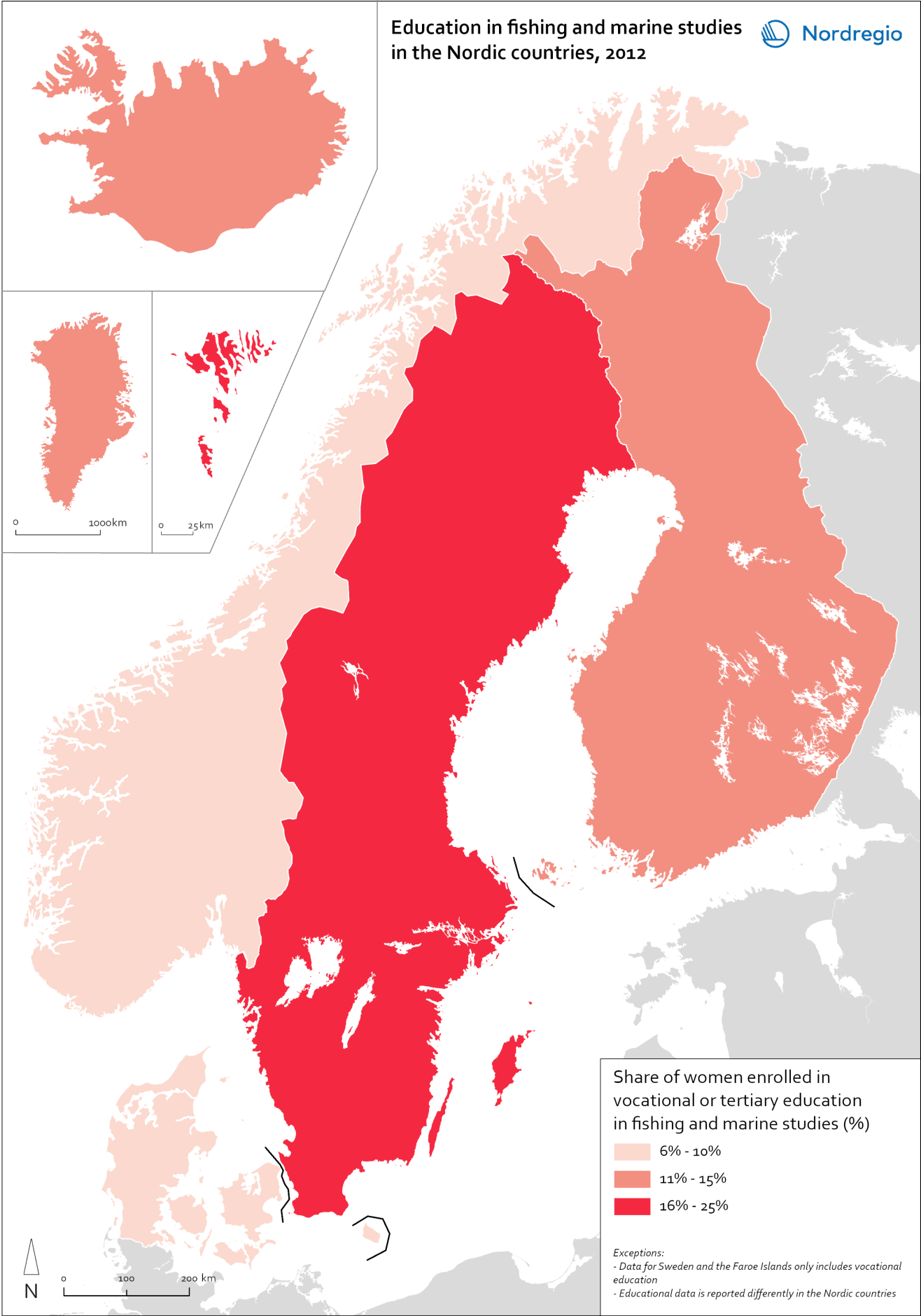
Figure 49. Share of women enrolled in marine studies across educational levels in the Nordic Region 2012.
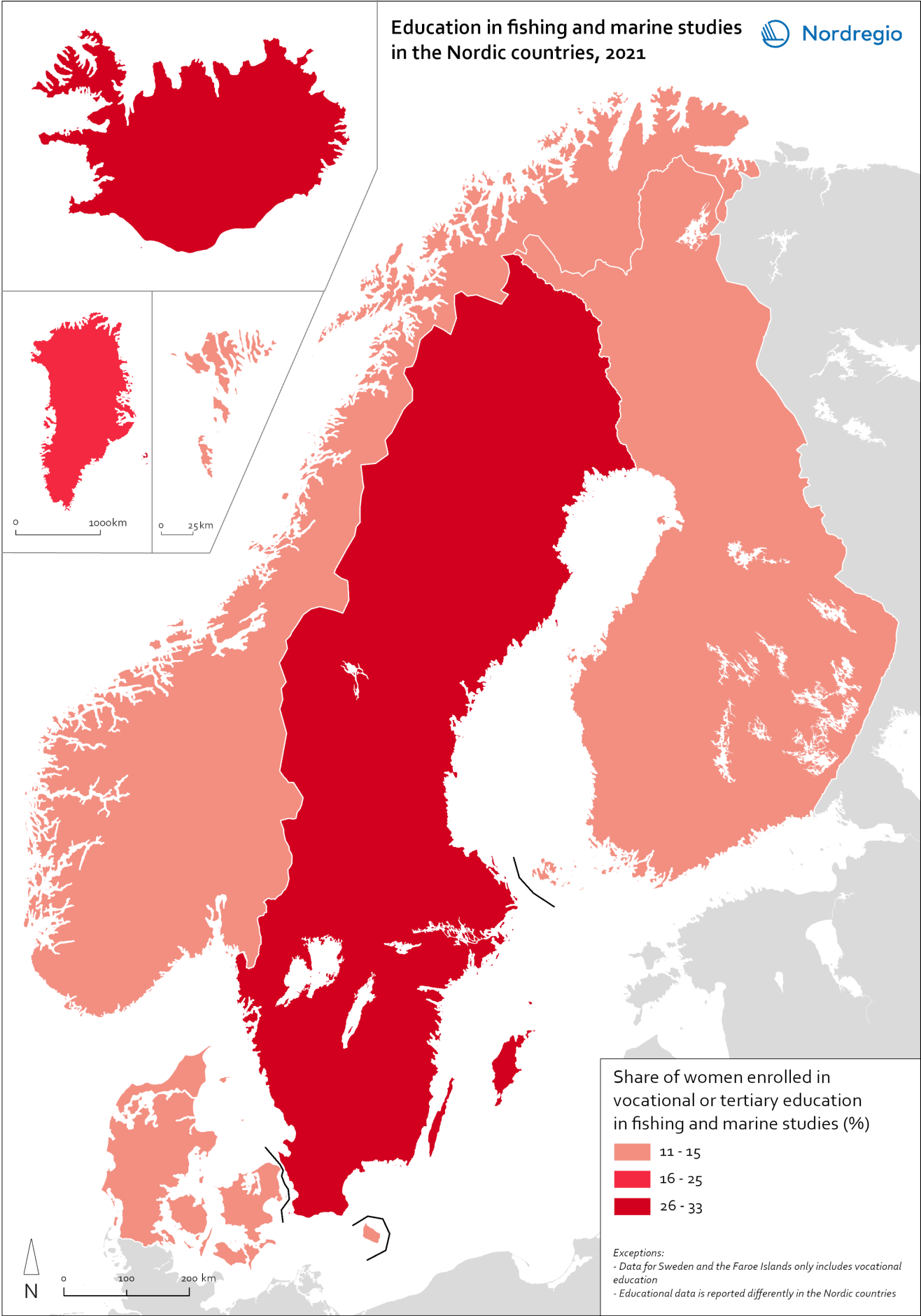
Figure 50. Share of women enrolled in marine studies across educational levels in the Nordic Region 2021.
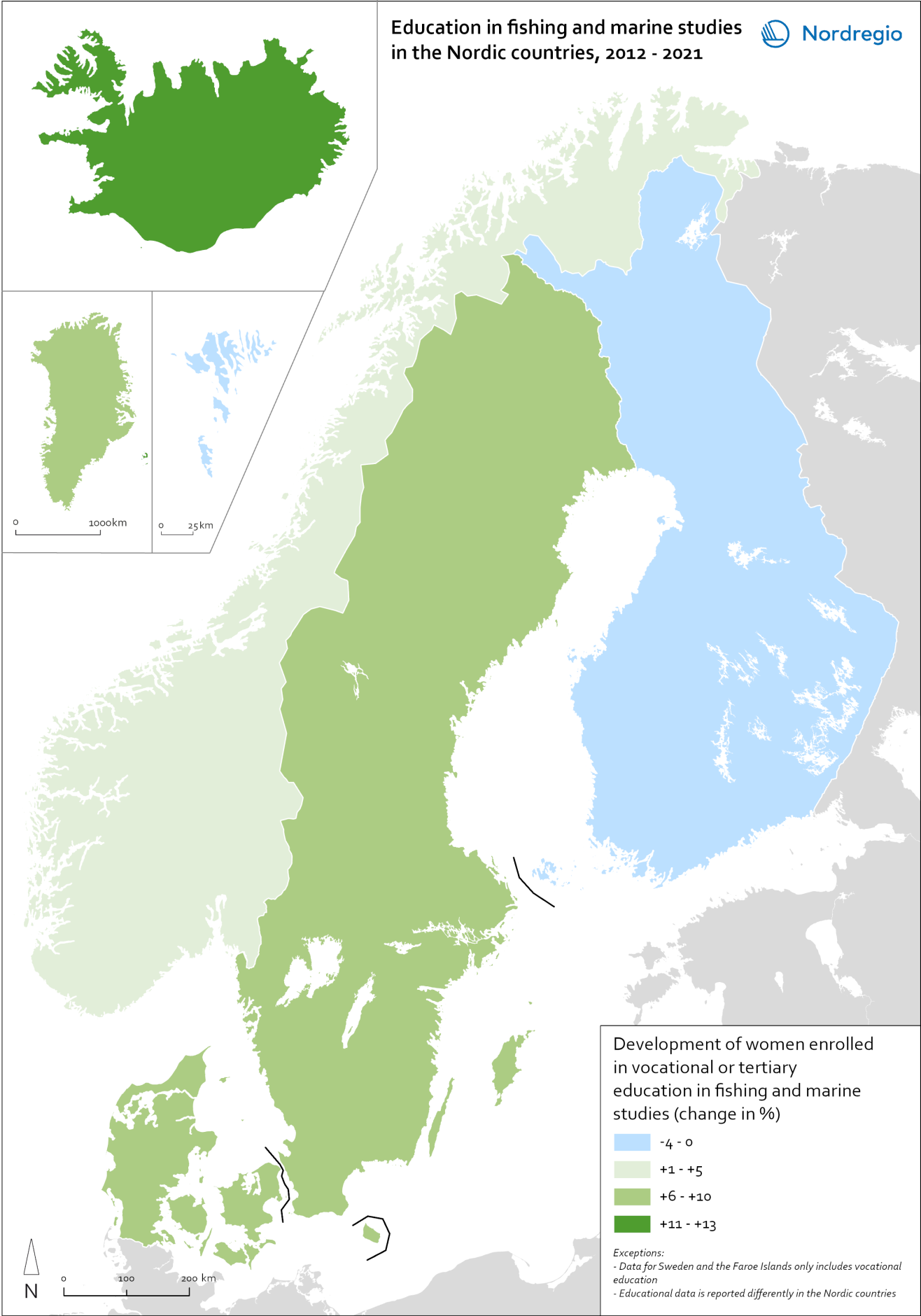
Figure 51. Development of women in fishing and marine studies in the Nordic Region 2012-2021.